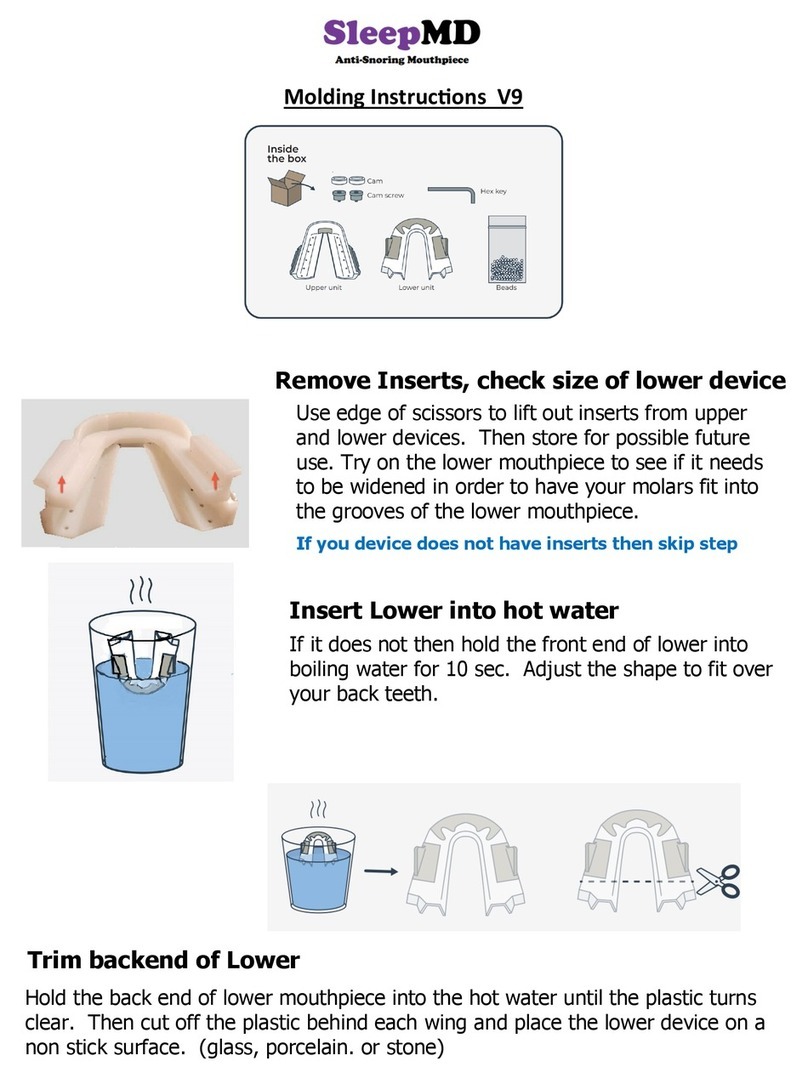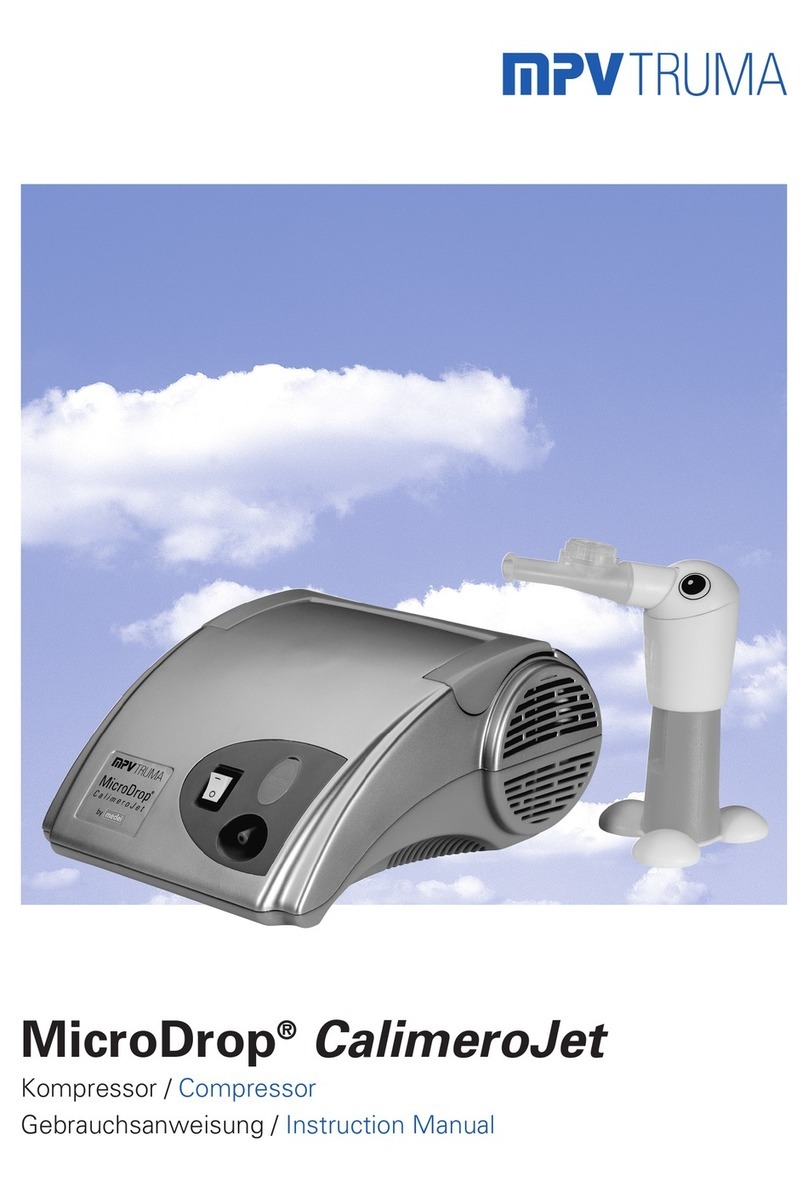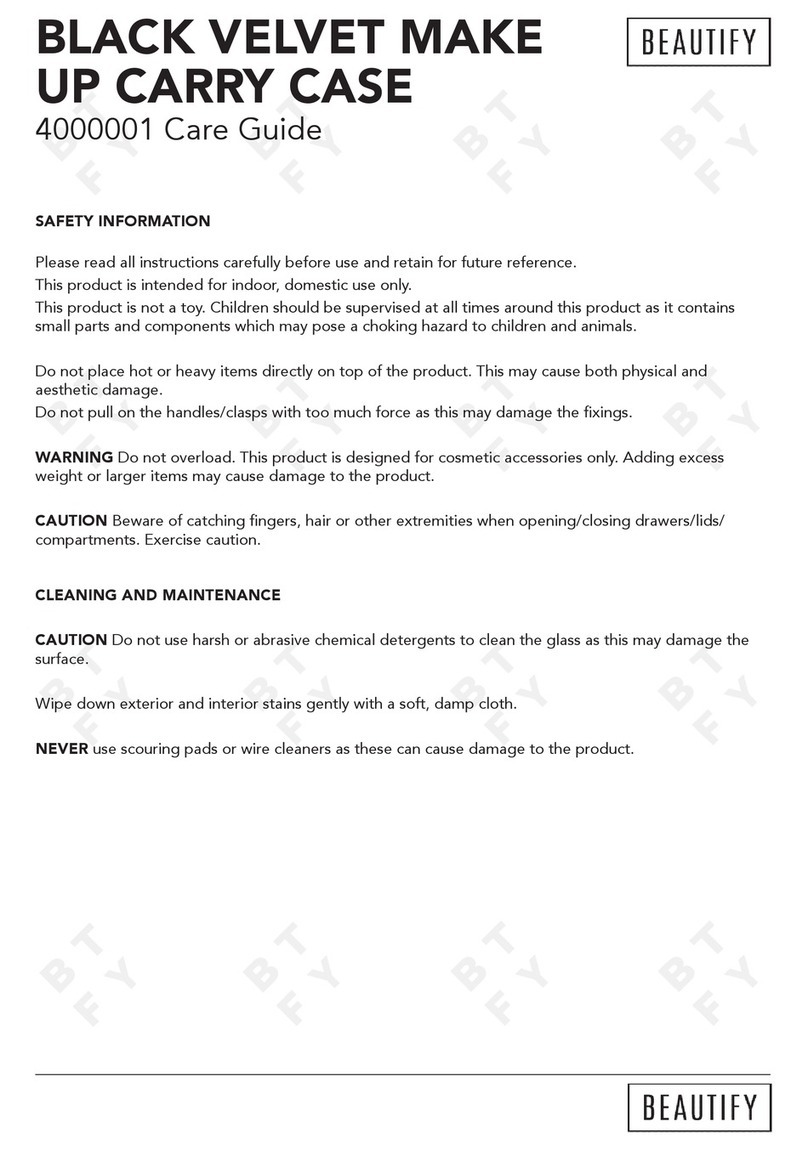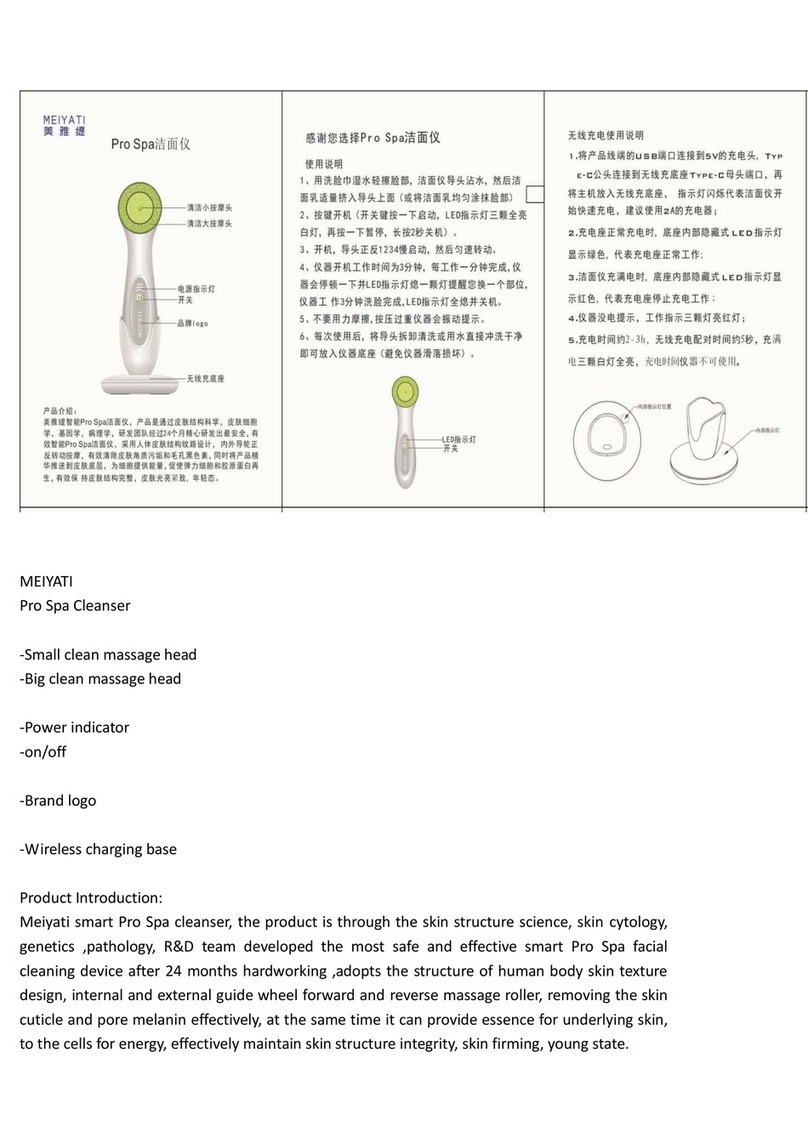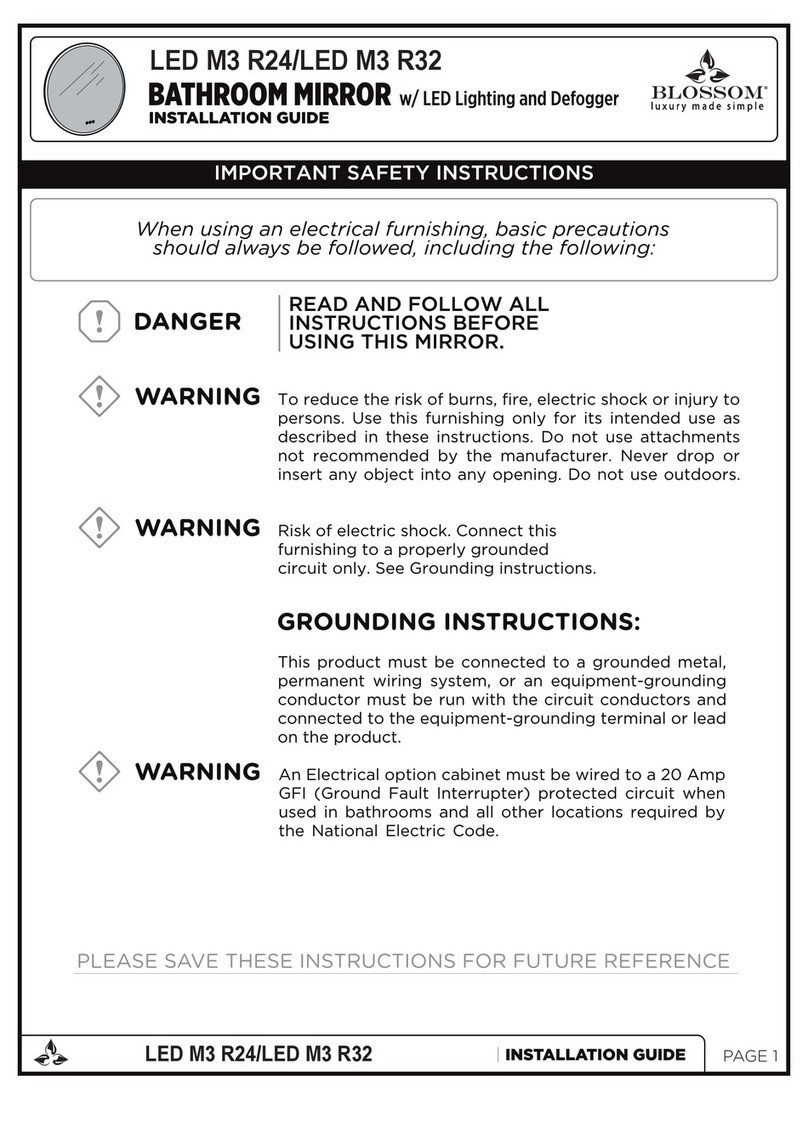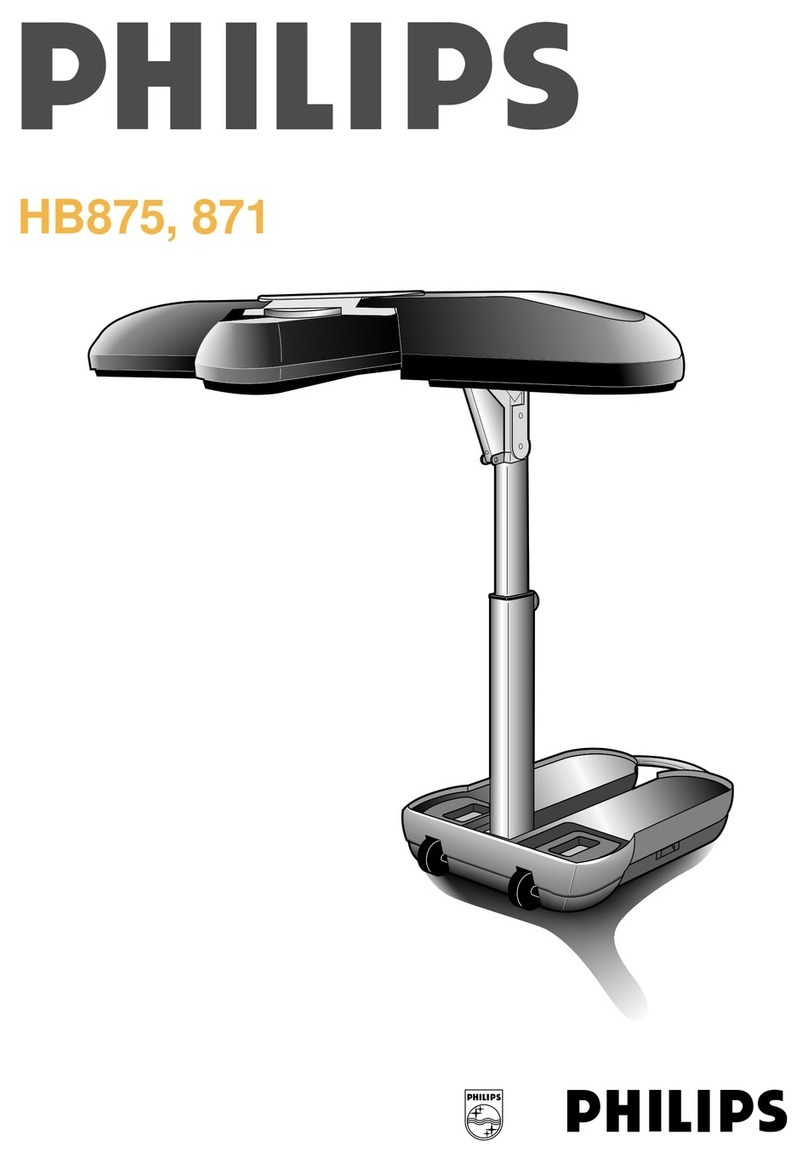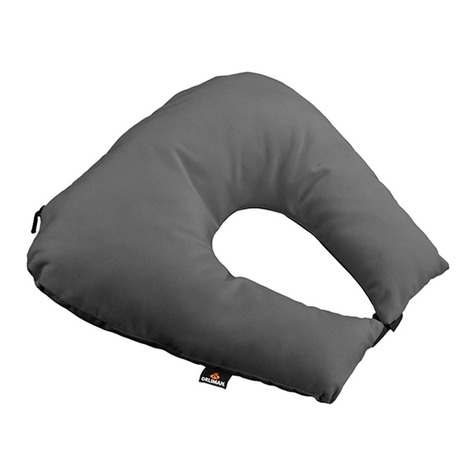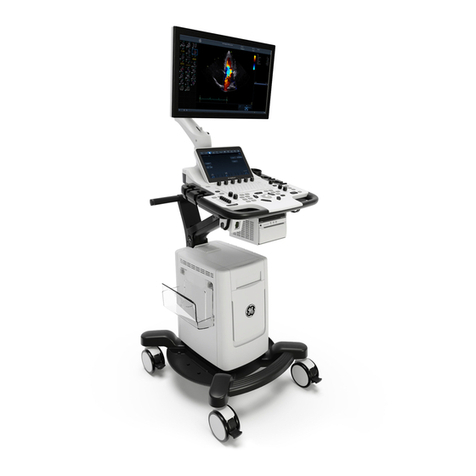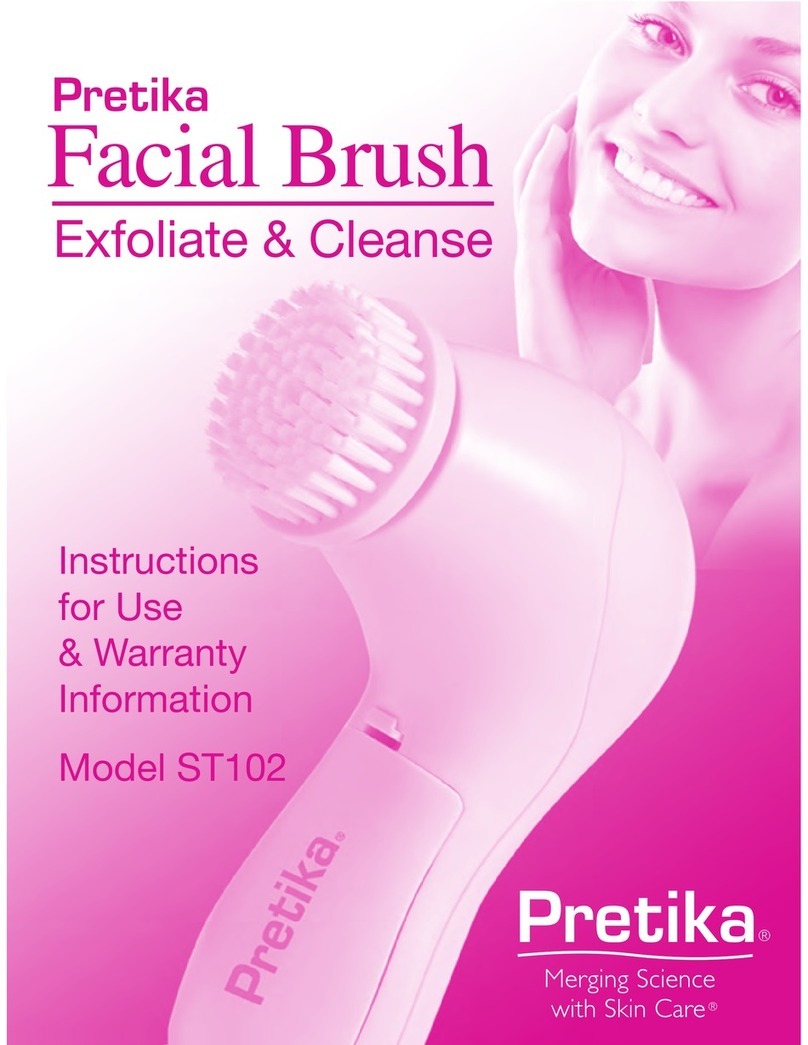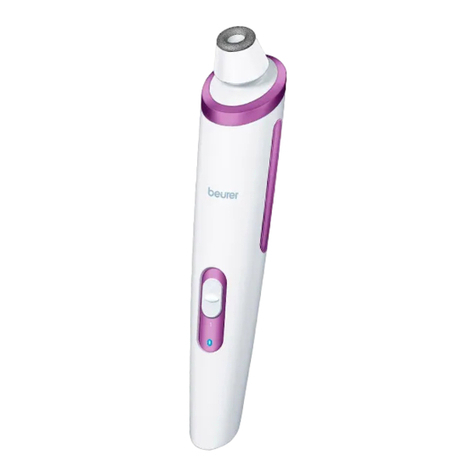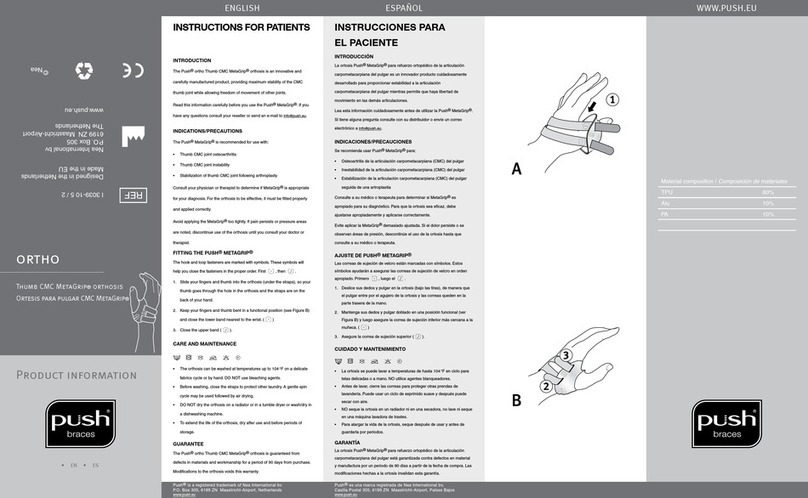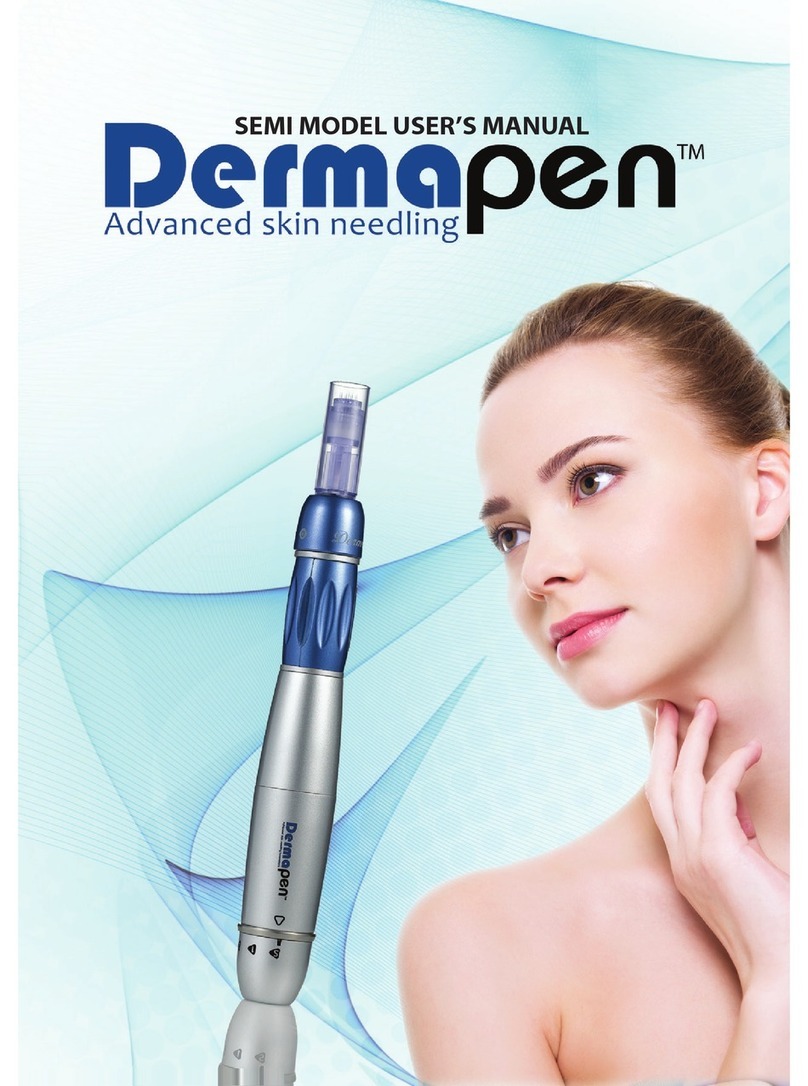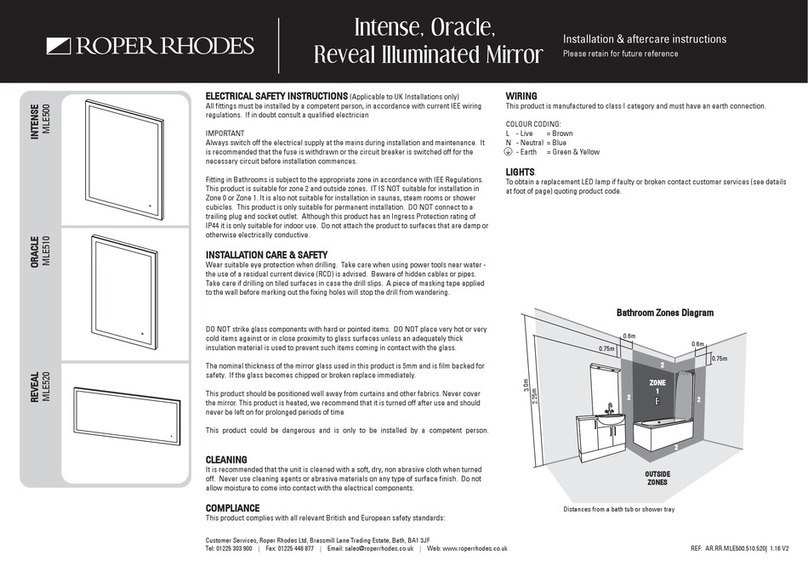SleepMD Anti-Snore Mouthpiece User manual

Important Safety Information and Instructions: (Version: 1.5)
Introduction: The SleepMD device is designed to fit snuggly around the teeth. This material is
rigid but will not cause injury to dentition. This is to provide support for the independent splints.
The interaction of the splints produces forward advancement of the jaw. Other devices require
the jaw to be closed in order to maintain proper position. Not SleepMD! As we fall asleep at
night our muscles relax resulting in narrowing of the mouth. This normal physiologic process in-
sures the contact between the cam and the wings resulting in the corresponding protrusion of the
jaw. Each rotating cam of the upper mouthpiece has a set screw. The screw controls forward
advancement of the jaw. During sleep the wings on the lower splint maintain contact with the
cams, ensuring that the mandible is maintained in a forward position. This is preferred because it
does not require one to maintain a closed mouth in order to achieve the desired results. It also
produces less strain on the jaw joint.
Inside the Box:
Each order consists of a round protective container; ideal for traveling with this device. Inside
there are two light green mouthpieces. The upper unit (#1), includes the cams which are at-
tached by the cam screws (#3). The lower splint (#2), has the two wings. The hex key is
used to attach the cams to the upper mouthpiece. A bag of plastic beads is included to assist in
the molding processes.
Please read through these instructions before attempting to mold!
Also watch the molding Video. Two slightly different techniques are shown. Both will work.
Any new information will be reflected in these online instructions.
Appliance will return to original shape if placed in hot water.

Step 1. Upper Splint Molding
Heat water in a microwave safe container until boiling. Don’t place in boiling water. Let the
water sit for at least a minute to bring the temperature to around 130 degrees. Remove the
cams (wheels) using the hex key. Now place half of the plastic beads and the upper mouthpiece
in the hot water. In approximately one minute the inner white plastic will turn clear. Remove it
and place on hard surface. (fig. 1)
#1
Remove the soft plastic beads and form into a thin long tubular shape by rolling and pulling. Then
place it along the inner surface of the upper mouthpiece. blue line (fig. 2,3,3a)
#2
#3
#3a

Touch the metal with finger to test that it is not too hot and place over upper teeth. Use your
thumb to press the plastic into crevices of the teeth inside the mouth. (fig.4,4a)
#4 #4a
With mouth closed, place tongue to the roof of mouth for 1 minute. (fig.5)
#5
Remove by placing the index fingers in the back of the mouth over the metal plates. Pull
down-ward and forward. Note: If tight when removing, replace and remove multiple
times while the device is hardening. If still tight just dip area in the hot water for a
few seconds and replace.
Do not remold the entire mouthpiece!

#6
Replace in mouth and begin molding the lower mouthpiece.
Step 2. Lower Splint Molding
Reheat the water as before up to boiling and wait a minute for it too cool. Place lower mouth-
piece into the water along with the plastic beads. Do not let the beads get close to the mouth-
piece they will stick to it. When the plastic turns clear remove it and place on hard surface -wings
face up. Form the beads into a thin tubular structure and place along the inner surface of the
lower unit. (fig 8)
# 8

When cool enough, insert over the lower teeth while your bottom jaw remains at least 1-2 mm in
front of the upper. (fig.9a) Best at 50%-80% of maximum extension of jaw without
discomfort. Use the thumbs to press the wins against the upper.
Note: Instruction video suggests cutting off the back end of lower mouthpiece. This only needs
to be done if the back molars are at a higher plane then the other teeth in the mouth, resulting
in an in ability to close the mouth when the upper and lower are in place. See trouble shooting.
#9a
Use fingers to mold around the teeth and insure that the hot plastic does not stick to the upper
mouthpiece. Press the wings against the upper unit. (fig. 9b, 9c).
#9b
Wait one minute and then remove the lower mouthpiece by placing your thumbs beneath the
wings while pushing upward. (fig.10)
#9c
#10

Place the lower splint under cold tap water to harden and tighten it; The lower usually needs
tighten- ing. (fig.11)
#11
Place the cams on with the hex wrench and position them all the way back. (fig. 12)
Insert the upper and lower mouthpiece back in the mouth. Check to see that the cams contact the
wings. Adjust as needed. (fig. 13) NOTE: the lower jaw remains forward.
#13
Care and Cleaning:
Use warm soapy water and soft tooth brush to clean your device after each use. Check that cam
screw is tight before each use.
In the Morning Instructions: After removing the device, you may find that your jaw remains
slightly protruded. If this occurs, it will usually will resolve in a few minutes. If it remains for more
than 5 minutes, then lightly bite on a tongue depressor placed between the back molars. This
should be done for 5 minutes each day after use. This may occur if you clench your teeth during
the night.
#12
#13

Trouble Shooting:
If too tight, Do not remold!!
Dip the section the hot water for several seconds. Remove quickly. Repeat until resolved. If the
area around the upper front teeth is still tight reheat that section for a few seconds and then use
your index finger to spread it out away from the teeth. Sometimes, it can take several days
before the device stops shrinking and feeling too tight. If that occurs each night run the
tight section under hot tap water for about 30 seconds and place back in the mouth for
the night.
During the cooling process, only use cold water to tighten the device. Tightening the device is
required when there are missing teeth or very short crowns. After molding place in cold water to
tighten and set the device.
Too tight on the front teeth?
Additional adjustments:
If after using the device for several days you still find that you are snoring, an adjustment can be
made. Use the hex pin to loosen the screws and advance each cam 1 mm forward. Tighten and
try it for another night. Repeat as necessary. Be careful not to advance too much as it may cause
pain. Maximum forward position does not always get the best results.
Seng the wheel
forward toward the
front teeth will in-
crease the protrusion
of the jaw.

Trouble Shooting Continued:
If the upper device breaks don’t worry. Pre heat the front of the upper device and soften
the plastic beads. Place the softened plastic into the front of the device. Replace in mouth to
remold. (fig.15)
#15
When I close my mouth the lower piece pops out, but otherwise it feel secure?? Or
mouth won’t close with device in place.
This is due to the back of the upper splint hitting the back end of the lower mouthpiece. This causes it to
flip off or not close. To correct, heat the back end of the lower splint until the plastic turns clear and
then remove the plastic just be-hind the wings with scissors. (fig. 16)
#16
The device feels too bulky and causes discomfort on the cheeks.
If the wheels are placed too far back in the mouth it will be impinged by the muscles of the cheek.
The solution is to move the wheels forward on the upper mouthpiece, insert in the mouth and
then remold the lower mouthpiece. Otherwise, contact me and I will send you a smaller wheel.
Email me with questions or concerns at:

Impropper Wing Position
When molding lower mouthpiece
correct wheel/wing
Back part of wing is in
contact with the
wheel and rests
against the side of the
upper mouthpiece
1

r if
jar
If the wing is in the position of the Green arrow or the Red arrow,
then the mouth will not close. Or if the wings do not contact the
wheels, then the device will not properly position the jaw.
The Solution
Re-heat each side of the
lower mouthpiece by
placing it half way into
the hot water. When it
turns clear, replace in
the mouth while upper
is still inserted. The
wheels should be placed
all the way back and the
lower jaw should be
extended 50% of the
max protrusion.
2

Use your left thumb for the left side and place it in the direction of the
Red arrow to pull the wing forward while pressing inward against the
upper mouthpiece. See pictures below:
3

`
If the wings are angled
toward the tongue, they
may contact the upper
mouthpiece. This can
result in the inability to
close the mouth.
Therefore, the wings will
need to be pulled out. See
below:
4
Once the lower mouthpiece is
softened as in figure 1, grasp
the base of the wings with a
clamp or thin pliers. Pull the
wings along with the area of
attachment, outward in the
direction of the Red arrows.
Figure 5.
Then with the upper
mouthpiece still in place,
reinsert the lower one.
Use the thumbs to press the
wings in front of the wheels and
against the side of the upper.
See fig. 1.
5
Table of contents
Other SleepMD Personal Care Product manuals
